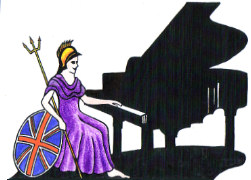Teachers, Accompanists and Piano Entertainers in the UK

UK Piano Page

Knightley Farm Workshop
Callingwood
Burton-on-Trent, Staffordshire DE13 9PU
England
Drayton Mill
Stourbridge, Worcestershire DY9 0BT
England
Broughton Pianos have been trading for over 30
170 Easterly Road
Oakwood
Leeds, West Yorkshire LS83AD
England
Suppliers of new and reconditioned acoustic pianos
Victoria Works
Benjamin Street
Wakefield, West Yorkshire WF29AR
England
We deal in a wide variety of Pianos traditional &
126 Meadfield Rd
Langley
Langley, Berkshire SL3 7JF
England
Used and new acoustic and digital piano
Music Festival for performers and guests Our 10th
18-06-2022 01:30PM
The Morecambe Bay Piano Group was set up to extend
11-12-2021 02:00PM
The Morecambe Bay Piano Group was set up to extend
08-01-2022 02:00PM
The Morecambe Bay Piano Group was set up to extend
12-02-2022 02:00PM